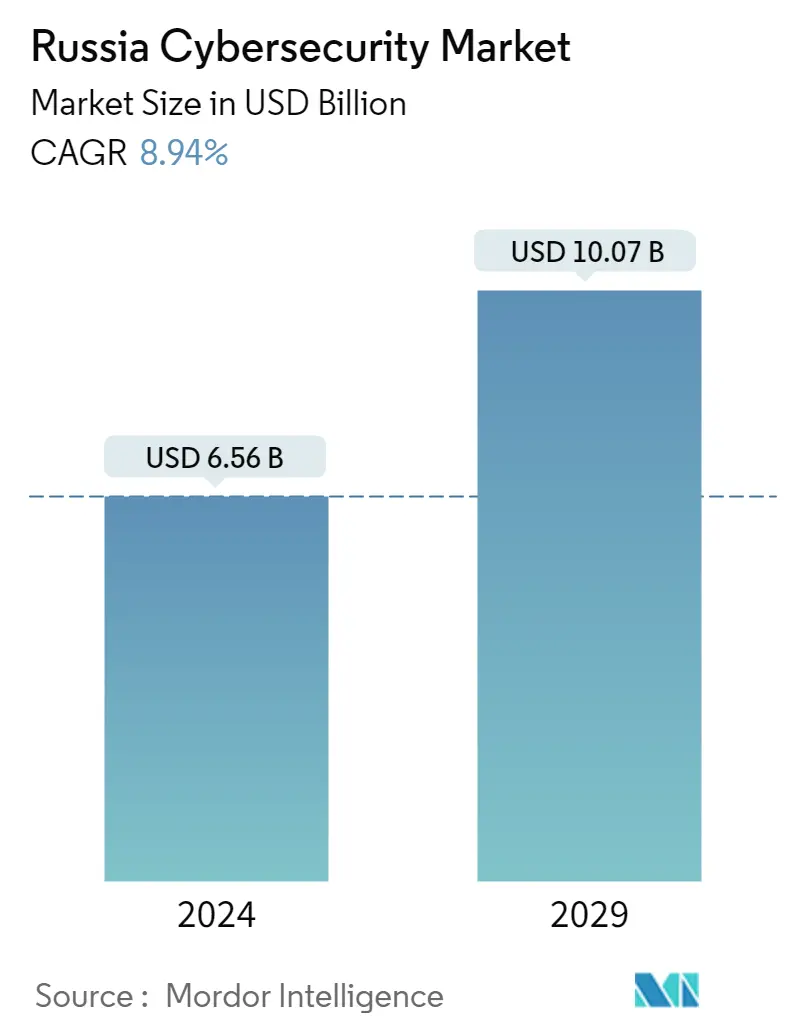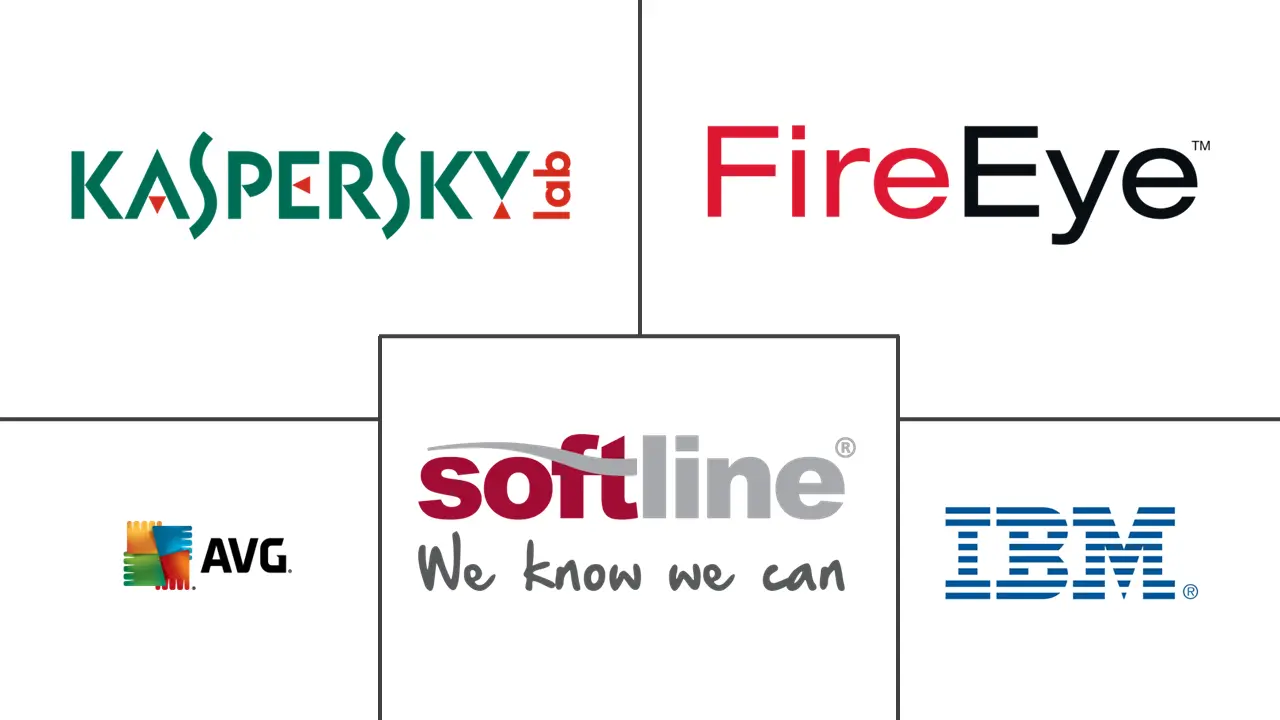Market Size of Russia Cybersecurity Industry

| Study Period | 2019 - 2029 |
| Base Year For Estimation | 2023 |
| Market Size (2024) | USD 6.56 Billion |
| Market Size (2029) | USD 10.07 Billion |
| CAGR (2024 - 2029) | 8.94 % |
| Market Concentration | Medium |
Major Players
*Disclaimer: Major Players sorted in no particular order |
Need a report that reflects how COVID-19 has impacted this market and its growth?
Russia Cybersecurity Market Analysis
The Russia Cybersecurity Market size is estimated at USD 6.56 billion in 2024, and is expected to reach USD 10.07 billion by 2029, growing at a CAGR of 8.94% during the forecast period (2024-2029).
Cybersecurity is a critical issue for national security. It affects the public and commercial sectors and encompasses various concerns linked to national security, whether through terrorism, criminal behavior, or state and industrial espionage. Due to the growing IT technological innovation and the capabilities of cyber weapons that pose a threat to national security, the threat landscape is constantly shifting.
- Russia has been focusing on being a digital economy. By 2024, the government intends to fully implement a comprehensive digital transformation of the Russian economy and social sphere. The increasing data leaks in the country make it imperative to strengthen cybersecurity. Furthermore, according to Fortinet Cybersecurity Company, 80% of enterprise traffic is likely to be encrypted, and about 50% of attacks targeting enterprises are likely to be hidden in encrypted traffic to infiltrate networks, therefore employing HTTPS inspection as a requisite.
- According to Maza, a Russian carding and fraud discussion forum announced that it had been breached, and hackers have leaked users' email addresses and forum credentials. Flashpoint, a threat intelligence firm, added that the hackers involved could be forum members of a law enforcement agency. A 35-page PDF file leaked on the dark web, with 3,000 rows of data, including alleged user information.
- In addition, in January last year, the Russian Foreign Ministry and the Government of Iran signed a cooperation agreement on cybersecurity and information and communications technology (ICT). The agreement includes cybersecurity cooperation, technology transfer, combined training, and coordination at multilateral forums like the United Nations. The cyber corporation between Moscow and Tehran is focused on intelligence sharing and improving cyber defenses rather than sharing offensive capabilities.
- The increase in remote connections augmented by work from home has increased the scope of cyberthreat. For instance, according to the IBM Security report 2020, 76% of the respondents mentioned that remote work would increase the time to identify and contain a potential data breach. Having a remote workforce was found to increase the average total cost of a data breach of USD 3.86 million by nearly USD 137,000 for an adjusted average total cost of USD 4 million.
- Over the past few years, security systems have focused on making it difficult for attackers to reach critical data. Some say that even this has not happened. As a result, the ordinary user is increasingly wary of the security of the Internet. Solutions that may have worked a few years ago are irrelevant now. Organizations need several resources to identify and recover from cyberattacks and be highly prepared. In many cases, the organization might need to shut down its operations for days to recover from a breach or attack. In poor planning and inadequate infrastructure, the time to recover from an incident may be considerably high.
